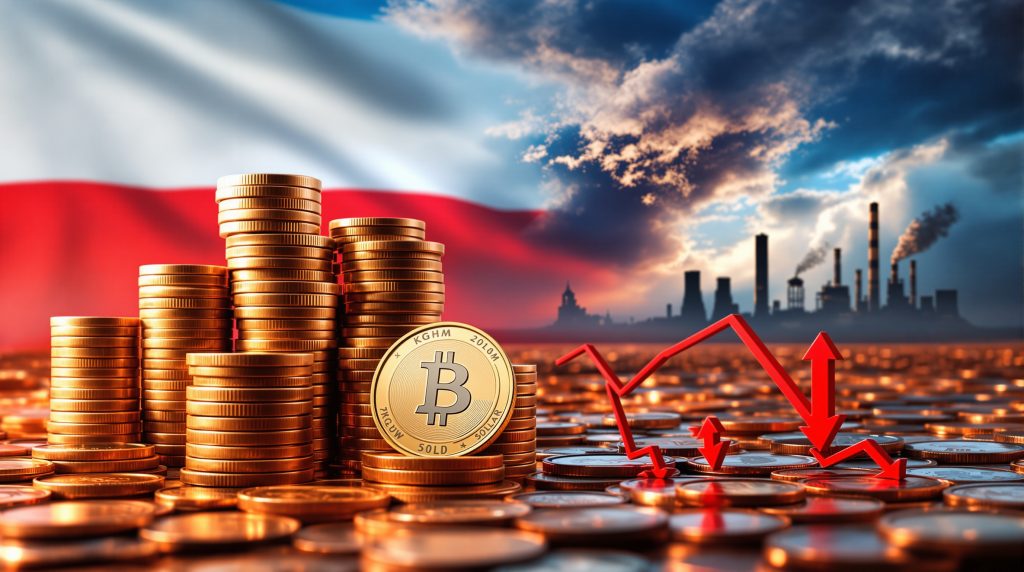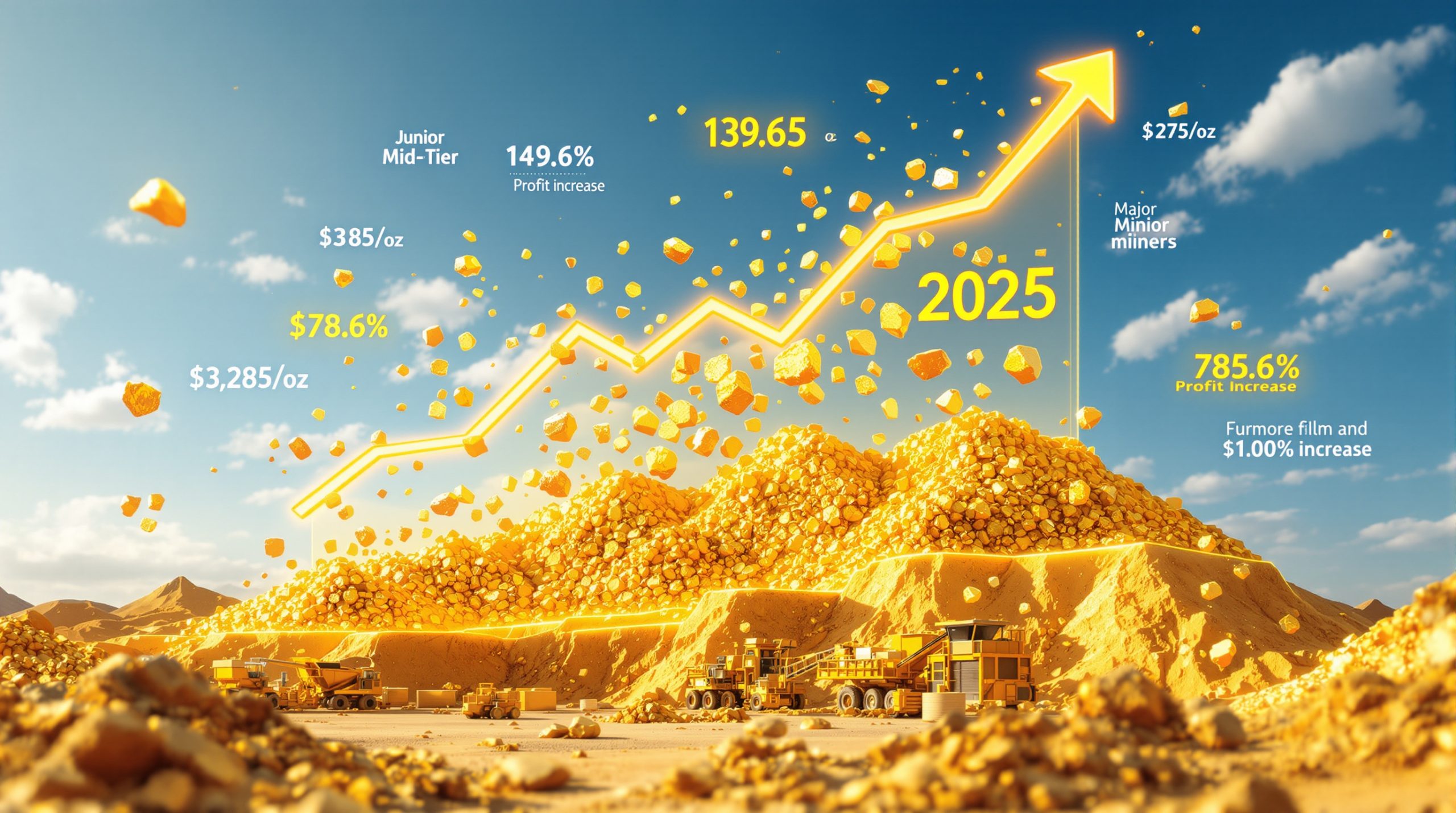Understanding the Factors Behind KGHM's Q2 2025 Profit Decline
The second quarter of 2025 delivered mixed results for KGHM, one of the world's largest copper and silver producers. Despite rising metal prices, the state-controlled Polish mining giant reported a 10.6% year-on-year decrease in earnings, highlighting the complex interplay of factors affecting the company's financial performance. This analysis examines the key drivers behind KGHM's profit decline and what it means for investors and the broader copper market.
Currency Fluctuations Create Significant Headwinds
The primary culprit behind KGHM's profit decline lies in unfavorable currency movements. Since January 2025, the Polish zloty has strengthened approximately 12% against the US dollar, creating a substantial challenge for the company's financial results.
This currency dynamic creates a fundamental mismatch in KGHM's financial structure: the company generates most of its revenue in US dollars while incurring the majority of its operational costs in Polish zlotys. When the zloty strengthens against the dollar, each dollar of revenue translates to fewer zlotys, directly compressing profit margins even when operational performance remains strong.
The impact of these currency and tariff pressures was significant enough to offset what would otherwise have been positive financial results driven by improved copper prices. This demonstrates the outsized influence that exchange rate movements can have on multinational mining operations with mismatched revenue and cost currencies.
Financial Performance Metrics Show Mixed Results
Despite the challenging currency environment, KGHM's financial results presented a mixed picture in Q2 2025:
- Adjusted core profit fell to 2.37 billion zlotys ($651.83 million)
- Results exceeded analyst expectations of 2.24 billion zlotys
- Net profit reached 249 million zlotys, below the forecasted 315 million zlotys
- Revenue totaled 8.61 billion zlotys, slightly under the projected 8.66 billion zlotys
The fact that core profit exceeded analyst expectations despite the currency headwinds suggests that KGHM's underlying operational performance remains robust. However, the gap between anticipated and actual net profit indicates that bottom-line results were more severely impacted by the exchange rate situation than analysts had projected.
This performance discrepancy highlights an important consideration for investors: distinguishing between operational effectiveness and financial outcomes affected by external factors like currency fluctuations.
Copper Price Trends and Their Impact on KGHM
Rising Copper Prices Provide Partial Offset
While currency movements created significant headwinds, rising copper prices offered some counterbalance to KGHM's financial results:
- Average LME copper price rose to $9,431 per tonne in H1 2025
- This represents a 3.7% increase compared to H1 2024 average of $9,090 per tonne
- Price improvements partially offset currency-related challenges
This copper price appreciation reflects broader market dynamics including supply constraints, growing demand from renewable energy and electric vehicle sectors, and global infrastructure investments. For KGHM, these improved copper price insights helped mitigate what would have otherwise been an even more significant earnings decline.
The Commodity-Currency Relationship
KGHM's results perfectly illustrate the complex relationship between commodity prices and currency movements that affects many global mining companies. This relationship creates several important dynamics:
- KGHM's business model is particularly sensitive to USD/PLN exchange rate movements
- Revenue-cost currency mismatch introduces inherent volatility in financial results
- Positive commodity price movements can be neutralized by unfavorable currency shifts
- Operational performance metrics may differ significantly from financial outcomes
For investors and analysts, this means that evaluating KGHM's performance requires looking beyond headline financial figures to understand the underlying operational effectiveness and the external factors influencing reported results.
KGHM's Position in the Global Copper Market
Company Profile and Strategic Importance
KGHM holds a significant position in the global metals market:
- One of the world's largest producers of both copper and silver
- State-controlled enterprise with strategic importance to the Polish economy
- Operations span multiple countries with diverse mining assets
- Financial performance serves as a barometer for broader copper industry trends
The company's vertically integrated business model encompasses mining, processing, smelting, and refining operations. This integration provides operational advantages but also creates exposure to multiple segments of the value chain, each with its own market dynamics and cost structures.
Production and Supply Chain Considerations
KGHM's operational infrastructure includes key assets such as the Głogów Copper Smelter and refinery, representing critical processing infrastructure. The company has maintained production levels despite challenging market conditions, highlighting operational resilience.
As a major global producer, KGHM's output decisions and production costs have broader implications for global copper supply trends. The company's integrated operations from mining through refining allow it to capture value throughout the production chain, but also expose it to multiple points of potential cost pressure or operational disruption.
Policy Changes and Their Impact on KGHM's Future
Polish Mining Tax Reform Creates Positive Outlook
A significant bright spot in KGHM's future outlook comes from anticipated policy changes:
- The Polish government announced in May that it would cut the country's copper mining tax from 2026
- This tax reduction is expected to significantly lower KGHM's cost structure
- The reform represents potential for improved profitability despite market volatility
- The change demonstrates strategic government support for this national mining champion
This tax reform marks a major positive catalyst for KGHM's medium-term financial prospects. By reducing the fiscal burden on copper production, the Polish government is effectively strengthening KGHM's competitive position in global markets while potentially enabling increased capital investment in future growth.
Long-term Financial Outlook
Looking beyond the current quarter's results, several factors point to potential improvement in KGHM's financial performance:
- Tax reform likely to strengthen competitive position in global markets
- Reduced fiscal burden may enable increased capital investment
- Potential for improved shareholder returns in coming years
- Financial resilience expected to improve with lower tax obligations
These factors suggest that despite current currency challenges, KGHM may be positioned for stronger financial performance in 2026 and beyond, particularly if copper prices remain supportive and if the company can effectively manage its currency exposure.
Investment Implications of KGHM's Results
Market Response and Investor Considerations
For investors evaluating KGHM, several key considerations emerge from the Q2 2025 results:
- Performance exceeded analyst expectations despite headline profit decline
- Currency effects versus operational performance distinction important for investors
- Forward-looking indicators suggest potential improvement in coming quarters
- Tax reform represents significant positive catalyst for 2026 and beyond
The mixed nature of these results creates a nuanced investment case for KGHM. While current currency headwinds present challenges, the underlying operational performance and future tax benefits may offer value for investors with a longer-term horizon.
Risk Factors and Monitoring Points
Investors considering KGHM should closely monitor several key risk factors:
- Continued currency volatility remains the primary risk factor
- Copper price trajectory is critical for revenue projections
- Production costs and operational efficiency metrics warrant close monitoring
- Government policy changes could further impact financial outlook
The interplay between these factors will largely determine KGHM's financial performance in coming quarters. Particular attention should be paid to USD/PLN exchange rate movements and any developments related to the implementation timeline for Poland's mining tax reform.
FAQ: Understanding KGHM's Financial Performance
How does currency exchange impact KGHM's profitability?
KGHM generates most revenue in US dollars while incurring costs primarily in Polish zlotys. When the zloty strengthens against the dollar (as it did by approximately 12% in early 2025), the company receives fewer zlotys for each dollar of sales, directly reducing profit margins even when operational performance remains strong.
What is the significance of Poland's mining tax reform?
The planned reduction in Poland's copper mining tax starting in 2026 will substantially lower KGHM's cost structure, potentially improving profitability by several percentage points. This government policy change represents a significant positive catalyst for the company's medium-term financial outlook.
How does KGHM compare to other global copper producers?
As one of the world's largest copper and silver producers, KGHM occupies a strategic position in global metals markets. While facing unique challenges related to Poland's currency and tax environment, the company's integrated operations from mining through refining provide competitive advantages in certain market conditions.
What metrics should investors monitor regarding KGHM's performance?
Key performance indicators include:
- Copper price trends on the London Metal Exchange
- USD/PLN exchange rate movements
- Production volumes across major mining operations
- Cost-per-ton metrics for mining and processing
- Updates regarding the implementation of Poland's mining tax reform
The interplay between these factors will largely determine financial outcomes in coming quarters.
Disclaimer: This analysis contains forward-looking statements and financial projections that involve inherent risks and uncertainties. Actual results may differ materially from those anticipated. Investors should conduct their own research and consider consulting a financial advisor before making investment decisions.
Further Exploration
For readers interested in deeper understanding of global copper market dynamics, additional resources include industry publications focusing on metals markets, regulatory filings from major copper producers, and economic analysis of commodity currency relationships in resource-dependent economies.
Understanding the complex interplay between commodity prices, currency movements, and fiscal policy remains essential for properly evaluating companies like KGHM that operate at the intersection of these forces. Investors looking toward the future might also consider the growing opportunities in copper & uranium investments as the global energy transition accelerates demand for these critical minerals. Additionally, watching for potential mining consolidation trends could provide insights into how companies like KGHM might position themselves strategically in the evolving metals market landscape.
Want to Spot the Next Major Mineral Discovery Before the Market?
Discovery Alert's proprietary Discovery IQ model provides real-time notifications when significant mineral discoveries are announced on the ASX, giving you a crucial market advantage. Explore our dedicated discoveries page to see how historic mineral discoveries have generated substantial returns for early investors.




